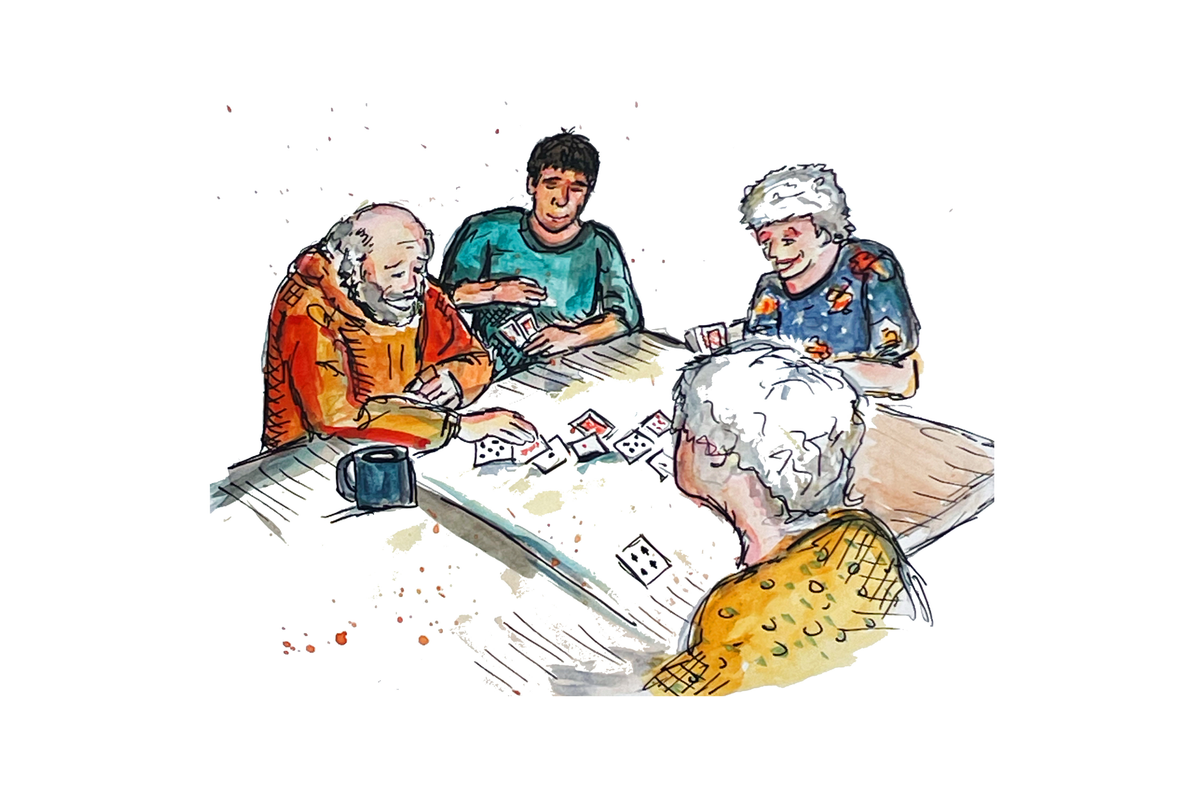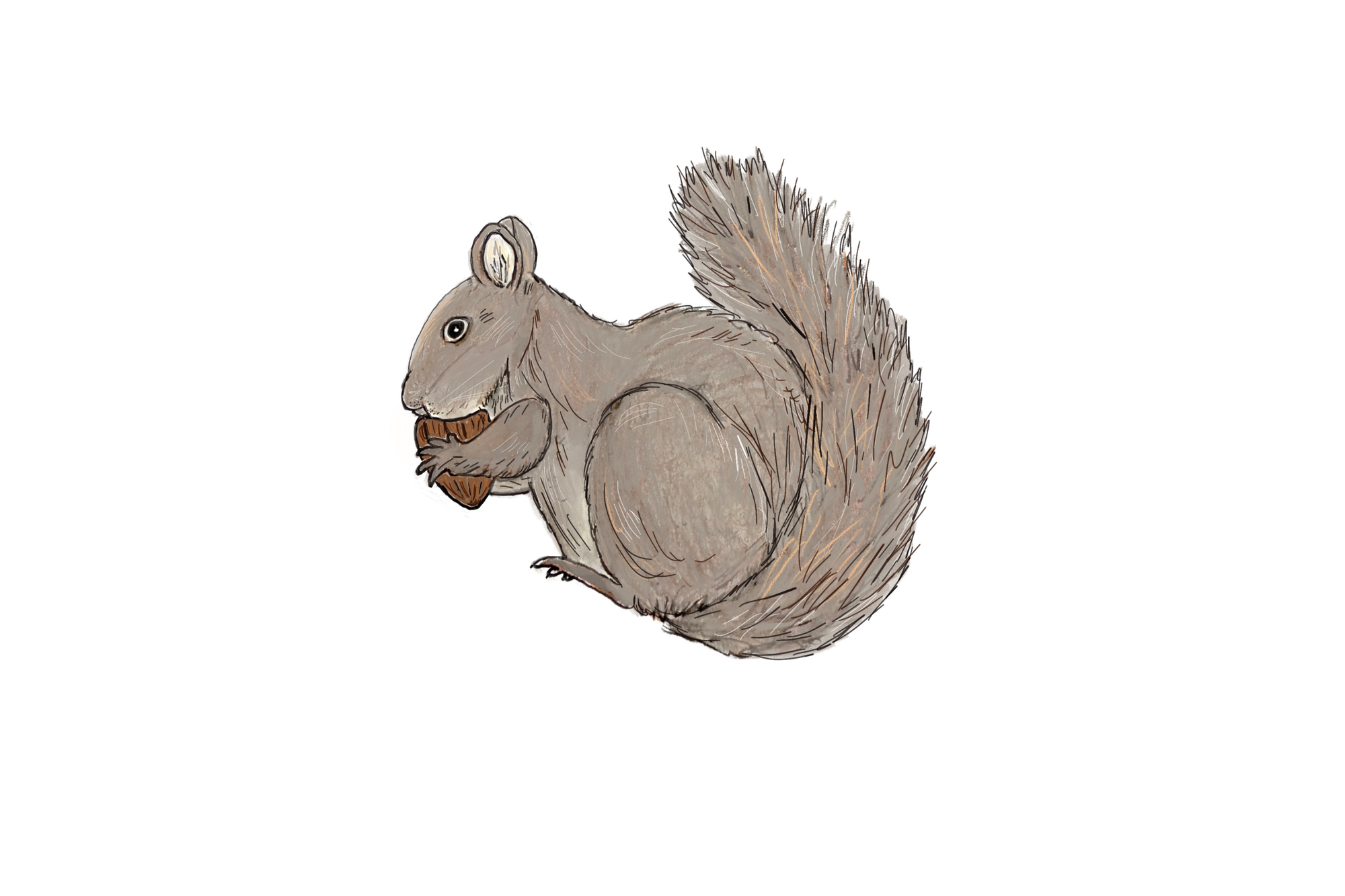Drawn by Nature: Chickadee, squirrel brains expand for food caches
"In the realm of natural-world wonders, some animals can expand their brains when needed," writes Lisa Meyers McClintick.

It’s become a running joke in our family how often I backtrack through the house, fumble through the car, or ask, “Can you call my phone?” to find the device that’s supposed to keep people more organized.
Society quickly blames aging for forgetfulness when maybe it’s that the brain is trying to track too many things at once. Women often juggle multiple tasks, and people may be slapped with adjectives such as “scatter-brained,” “bird-brained,” and “squirrely” for not being able to focus on one thing or to be frequently in motion.
I propose flipping those phrases into compliments.
Consider this: In the realm of natural-world wonders, some animals can expand their brains when needed. In the case of squirrels and chickadees, this survival skill allows them to not only stash vital food each fall, but to somehow remember where to find thousands of seeds to sustain them over the winter.
One researcher told National Public Radio reporters, “These animals show a level of plasticity in their brains that puts us humans to shame.”
A love for chickadees
While they’re one of the tinier songbirds, black-capped chickadees stick around through the toughest Minnesota winters. On the coldest days, especially when the sun shines, you might hear their uplifting call of chicka-dee-dee-dee.
Easy-going and friendly, they flitter about, making it easy to spot them as they “scatter hoard” up to 1,000 seeds a day or 100,000 a season. The hippocampus of their brains, which involves spatial memory, expands about 30 percent each fall to remember hundreds of hiding places.
We see them hopping along wooden fences, balancing on window frames and home siding, and flitting along branches and tree trunks. They tuck small groups of seeds into any tiny crevice they can find and retrieve their food cache later.
That ability to expand their memory, specifically the hippocampus where spatial thinking is done, is often referred to as neuroplasticity. That capacity can shrink again in the spring when fresh insects and caterpillars are abundant.
Sign up for Project Optimist's newsletter
Solution-focused news, local art, community conversations
It's free. No spam. Unsubscribe anytime.
This enviable skill offers yet another reason to admire chickadees, a little bird that drew the most love when the Minnesota Department of Natural Resources polled residents on their favorite birds years ago.
Researchers have found that nuthatches, some woodpeckers, jays, and crows also scatter-hoard food for the winter and rely on spatial memory to remember all the locations.
Squirrels excel at tracking food stashes
Gray squirrels also have the capacity to expand their memory in the fall.
Like birds, they’re shifting their spring and summer diets of plants, insects, and even mushrooms to a flurry of fall seed-collecting. Much of it includes acorns, walnuts, and other tree nuts that they collect and cache to survive the winter.
 Project OptimistJen Zettel-Vandenhouten
Project OptimistJen Zettel-Vandenhouten
By contrast, red squirrels will stash their nuts in one core area or “midden,” and then defend it throughout the winter, according to psychology researchers at the University of Michigan.
Gray squirrels use the chickadee’s approach of scatter-hoarding. When you see squirrels turning nuts over in their mouths or paws or flicking their head, that’s their way to evaluate the nuts’ weight and freshness.

Researchers have discovered they’re also categorizing nuts and putting them into intentional groups as they choose hiding places, such as burying them in the dirt to keep nuts from drying out. The groupings apparently help them remember where the stashes can be found, and their brains can add capacity to retain a mental map of winter food.
Besides providing the necessary calories and nutrients for winter survival, knowing exactly where they are also helps squirrels survive in a season when predators from owls to foxes are on the hunt for their own sustenance. Squirrels need to be able to dash, dig up buried nuts, and return to safety.
This late fall, as I watch squirrels and chickadees, both creatures that are common and easy to take for granted, I do so with fresh appreciation. I watch where they go in the search for hiding places and find myself less impatient with the holes squirrels leave in planters and the garden.
I’ll now consider “bird-brained” a compliment and watch chickadees with envy as I pat down my pockets and wonder yet again where I placed my smartphone.
Who’s behind this column?
St. Cloud-based Lisa Meyers McClintick has been an award-winning journalist and photographer for more than 30 years. She’s also a teaching artist who is passionate about nature journals, and a volunteer Minnesota Master Naturalist. Follow her on Instagram.
This column was edited by Jen Zettel-Vandenhouten.
